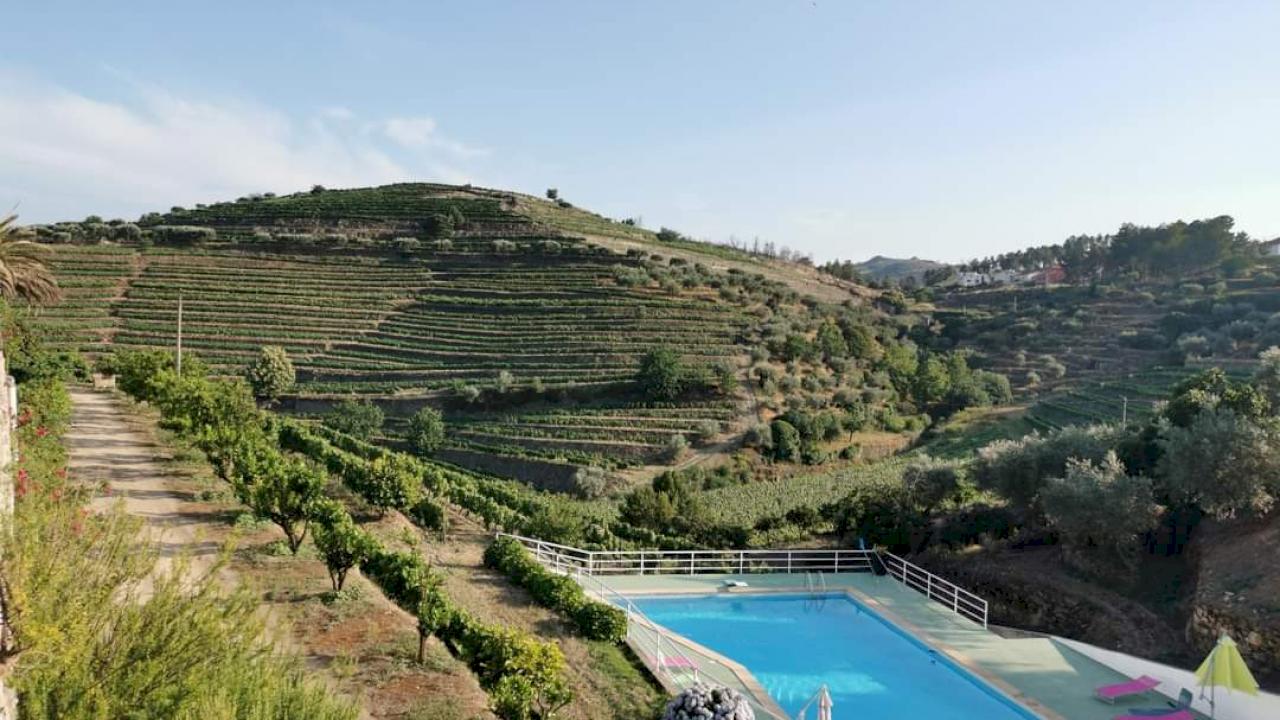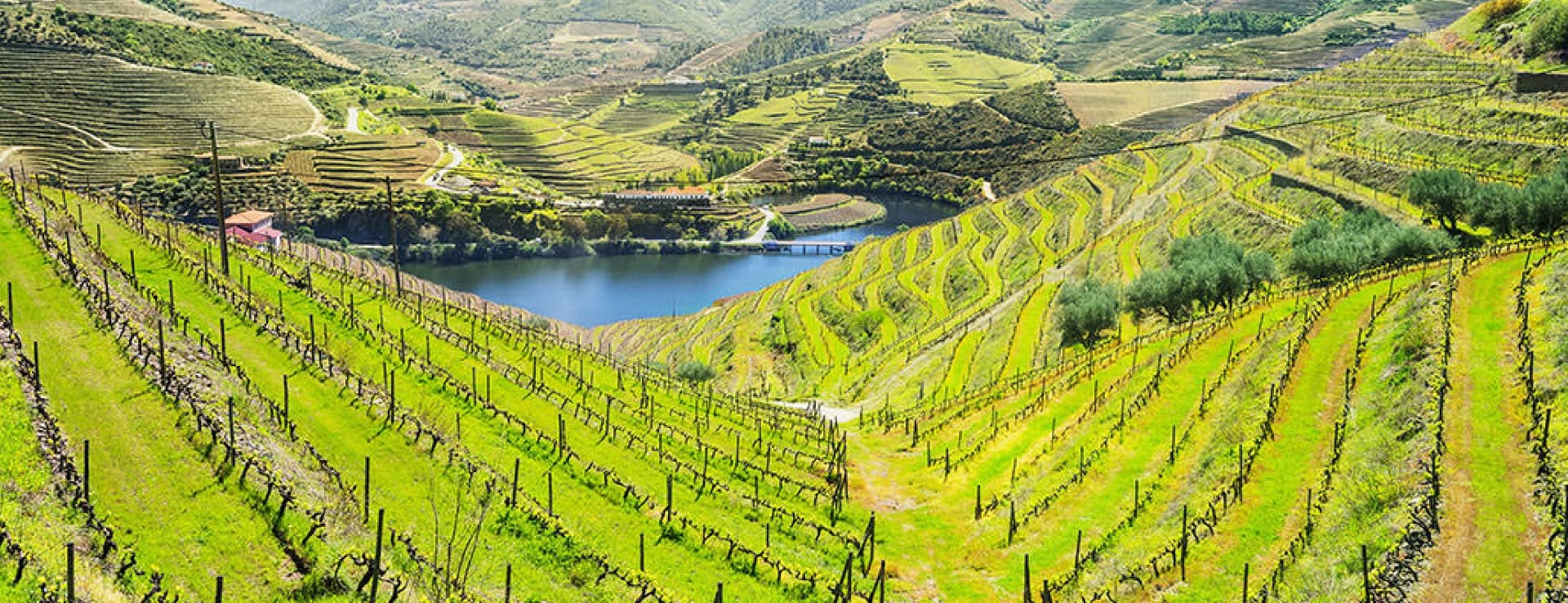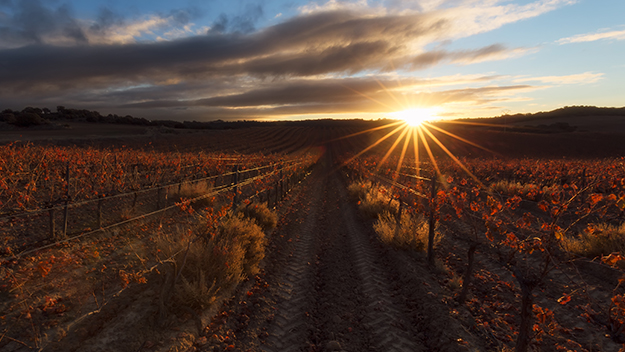Find your winery or vineyard
More than 10 Wineries and Vineyards for sale in DOC Douro and DOC Port

Winery with production capacity in the Douro area.
DOC Port and DOC Douro.

132 ha farm with luxury villa, swimming pool and wine cellar. 7 ha of vineyard and 5 ha of olive grove.
DOC Douro and DOC Port

Winery with house and 12 ha of vineyards
Property in DOC Douro and DOC Port.

Winery with 15 hectares views of the Douro in Prime area
DOC Douro y DOC Port

Hotel of 43 rooms with winery and vineyards.
Property in DOC Douro and DOC Port.

Rural hotel with vinyeards and olive trees in the Douro.
Estate with 7 ha of vineyards and 7 ha of olive groves

Winery with 15 hectares of vineyards, spectacular views.
DOC Douro y DOC Port

Historic house with wine tourism and 25 ha of vineyards
DOC Douro y DOC Port
Infographic of the Denomination of Origin

Change to imperial units (ft2, ac, °F)Change to international units (m2, h, °C)
D.O. year of foundation:
1907
Number of wineries (2017):
228
Total surface area:
250.000 ha617.750 ac
Maximum production allowed:
14.050 kg/ha12.535 lb/ac
Altitude of the vineyards:
Min: 100m
Max: 700m
Min: 328ft
Max: 2.297ft
Temperature:
Min: 12º
Max: 17º
Min: 54°F
Max: 63°F
Yearly rainfall:
700 l/m265 l/ft2
DOC Porto and Douro
LOCATION
Vine cultivation in the Douro region has a millennial tradition and was already cited in Tras-os-Montes by Estrabao, Greek geographer who lived in the 1st century BC. Archaeological findings discovered in the diggings in Quinta da Ribeira (Tralhariz) and in Fonte de Milho (Canelas) demonstrate the wine production in Roman times. Later on, in the 7th century references to the vine cultivation where found in the Visigothic Code. King Denis of Portugal used to accept annually wines among other products from Lamego town.
There are many references to the Douro wines; however, little is known about the business of Port wine, although it is assumed that it was started in 1678 thanks to the English people. It was thanks to the several political, economic and commercial circumstances that the Port wine developed its universal status and found its major market in Great Britain.
In 1703, the signing of the Methuen Treaty between England and Portugal gave a boost to the Port wine business when determining that Portuguese wines imported into England had to pay one third less in custom fees than French wines.
Even more important, British consumers preferred the Port wines elaborated in the Douro region than the “red of Portugal” from the Minho. British and Scotish trader where not the only who commercialise with the Port wine; there were families from the Nederland and Germany within this sector. However, and due to the great importance of the English market, British merchants predominated.
The second decade of the 18th century marked the beginning of the thirty years of rapid growth in the exportations of Port wine. The expansion of the business originated, as it was expected, the growth of vine cultivation in the region, but right after the first crisis within the wine sector happens. The business lowers the price and crops are adulterated degrading wine quality.
In 1756, the first Marquis of Pombal, also the first Minister of Portugal interceded in order to restore order. To combat the situation, the Marquis of Pombal intervenes and creates in 1756 the Douro Wine Company (also known as the General Company of Agriculture of the Wines of the Upper Douro). The Company had a monopoly on trade with England and Brazil, as well as on the production and comercialisation of brandy in the north of Portugal. This company carried out the first demarcation of the Douro region and all the regulations aimed at defending the quality and authenticity of the region's wine. The boundaries of the region were marked with 335 stone pillars, known as "pombaline walls". These walls, large carved granite stones engraved with the word Feitoria (factory), still exist today and represent invaluable pieces of national viticulture.
In 1757, the first complete classification of vine of Port wines was carried out (almost a century before than the similar classification of the Bordeaux vines). Vinhos da Feitoria, where the wines elaborated by the best wine producers and they were allowed to selling them for export and ask for a higher price, whilst those who elaborate wines with a more modest quality, known as “vinhos de ramo”, could only sell their wines in the domestic market.
The draconian action of the Marquis of Pombal and the monopoly company, although unpopular at that time, resulted in an improvement in the quality of Port wine and represented the beginning of a new era of growth and prosperity both for producer and exporters.
In 1907, the region of fortified wines from Douro is once again redefined and establishes that wines shall be exported by the Leixoes Port, in Porto city, where the designation of origin of Port wine was established. In 1926, Entreposto do Gaia, an extension of the Douro region where all the storages of the export brand of Port wine are located, was created.
In 1932, the Douro house with headquarters in Régua that unionizes all the wine growers of the region was created with the main function of setting up and update the cadaster, as well as the authenticity of the region’s wine. In 1933, the Instituto dos Vinhos do Douro e do Porto (Douro and Porto Wine Institute) an institution with the aim of guaranteeing the wine’s quality, as well as defending and promoting the brand, regulating prices and carrying out scientific researches.
In 1979, wines from de Douro are distinguished from wines from Porto. The first one is a designation of red and white wines and the second is of the famous fortified wines.
SOILS AND CLIMATE
The region is situated to the northeast of the country surrounding the Douro river and its tributaries from Barqueiros to Spain. To the north, the serras of Alvao, Padrela and Bornes protect the Douro from the incoming cold sea winds from the Atlantic Ocean while, to the west, the 1,415 m high Serra de Marao and Montemuro massifs cast a rain shadow over the whole region, giving a dry and hot climate in the summer, with the winter being harsh, generally cold and not very rainy, characteristics that are more pronounced the closer you get to the border.
The soil is rich in potassium and poor in organic matter, nitrogen and lime, containing an excess of clay, corrected by an excess of gravel from the degradation of the schist. While most of northern Portugal is granite, the slopes on both sides of the Douro River are slate in thin slabs through which roots can penetrate deeply whereas in granite it is impossible. In the Douro, slate is of paramount importance.
Vineyards are planted on traditional terraces (solcacos) with their resistance walls, these vineyards are difficult and expensive to work. In the 70s diagonal ramps appeared so that small tractors could work, known as patamares and financed in the 80s by the World Bank. These vineyards also have a number of problems such as low planting density. The traditional planting density in the Douro is 5,000-6,000 vines/ha, with the patamares system only reaching a density of 3,500 vines per hectare. There is also another system vinha ao alto, used by Ferreira and Ramos Pinto in the 80s that allows a density of 5.000 vines/ha, it is about planting the rows of vines from top to bottom instead of parallel to the mountain. This type of planting has changed the landscape in the Douro and there are several producers who claim to have improved the quality of their wines.
Wine classification has a complex system to regulate the production of grapes for the Port wines for a total of 21,000 wine growers. Each plot of vineyards has a punctuation depending on a positive or negative scale of points according to 12 physical variables such as altitude, locality, productivity, type of soil, type of plantation and handling of vineyard, inclination of slopes, age of grapes and density of plantation.
There are a total of 140,000 plots and each one is registered in the cadaster according to the classification of the vineyards from class A to class I. This classification is the basis for the subsequent annual authorisation or profit which determines the amount of wine that will be classified as Port in the region. Thus, the vineyards with the highest-class A and B are authorised to vinify more fortified wine than the lower classes, below class F are directly excluded from Port wine. This is how licences or cartoes are granted to winegrowers. The grapes that are excluded from the benefit are called consumption and usually account for more than half of the region's production. Until 1979, wine that was not Port wine was considered table wine. And in 2000 the Douro Boys network was founded, which has helped to raise awareness of Douro red wines.
The area of this region is about 240,000 ha, 110,000 of them are from Douro Superior.
GRAPE VARIETIES
There is a unique case among the Douro red wines, it is the case of the winery Barca Velha. The technical manager of the house Oporto Ferreira, Fernando Nicolau de Almeida, went to Bordeaux to study the winemaking of red wines in 1950, after returning, Ferreira’s Barca Velha was founded in 1952 and soon gained the reputation of being the iconic red wine of Portugal, the Grand Cru of Portugal.
Having seen the success of this winery, the production of red wines increased during the 70s and 80s. It seems that Touriga Nacional and Touriga Franca are the best varieties for the red quality wines. Tinta Roriz is used for the young wines, Tinta Barroca is used for the Port wines due to its high sugar content, Tinta Cao is used sporadically for red wines, Sousao is very colourful and is back in fashion, as well as Amarela. International varieties are out of the DOC Douro at the moment.
The most traditional classes of the region are of the red varieties: Bastardo, Moursico, Touriga francesa, Tinta Roriz, Touriga Nacional, tinta Amarela, Tinta Barroca; and for white varieties: Viosinho, Rabigato and Gouveio, Malvasía fina, Codega do Larinho, Arinto and Moscatel Galego.
In this region, there is a wine region with special features next to Favaios where the variety grown is Moscatel de Favaios. With regards to the white wines of the Douro, there are areas on the high banks of the river up to 800 m, around Lamego, Vila Real, Alijó, Murça and Sao Joao de Pesqueira where the white wines ripen more slowly. Sometimes white grapes are also planted in the areas of the quintas, even though they are at lower altitudes. There are three leading white wines in the area, Redoma de Niepoort, Wine & Soul's Furu and Quinta Nova's Mirabilis.
Classification of Port wines
Port wines follow a classification as for its aging. There are two large groups: aged in wood and aged in bottles. There are several Port wines that are aged in both, barrel and bottle; however, this is an exceptional case. Wood ageing, either in barrel, cask or tank, these are lots of varied vintages that compensate for variations and represent the style of the brand. These wines are not dated anywhere. There are some exceptions such as wines aged in wood with vintage, provided they are sold in bottles and after 7 years of ageing. It has the right to put the vintage on the label, as well as the mention of barrel-aged.
There are also wines aged in wood with age indication, these are the "Port wines" with a very good quality and the following designations: 10/20/30/more than 40 years old. These wines can only be marketed in bottle with the mention "aged in barrel" and with the years of bottle ageing.
Port wine has an alcoholic graduation between 19 and 22 º as well as variable residual sugar. It can be an extra dry wine with 0º B., dry up to 1.5º B., medium dry up to 3º B., sweet up to 5º B. and very sweet from 5º B. onwards.
With regards to the color of Port wine, it can be white or red depending on the vinified grapes.
The colour of barrel-aged Port wine is also an indication of the wine’s tuè. The most common are: Tinto (Red) generally young and sweet; Tinto Aloirado (Ruby) less young, sweet and with accentuated fruit aroma, with reductive ageing in order to maintain the red tones of colours and fruit aromas and flavours; the Ruby Premium can be in barrels from 4 to 6 years and the higher quality ones are called Reserva. Aloirado (Tawny) is an older, elegant, burnt topaz-coloured, medium dry and sweet wine of the highest quality, aged in wood for 2 to 3 years. There are also the Tawny Reserva aged for 7 years and the best have been aged for 10, 20, 30 or 40 years, the vintage Tawny called Colheitas which are aged in wood for about seven years. White with less body and lighter, delicate aroma, it can be sweet or dry or extra dry.
The Port wine aged in bottle is essentially the Vintage. It is the wine of a single vintage, produced in years of recognised quality, with exceptional organoleptic characteristics, full-bodied, with a very fine aroma and palate. It ages in bottle from 10 to 50 years after bottling between the second or third year of age and is presented to the consumer with the name of Vintage and its vintage year, with the name of the exporting firm.
Finally, there is another Port wine, called L.B.V. (Late Bottled Vintage), which is also a vintage wine, but bottled between the fourth or sixth year of age.
The Instituto dos Vinhos do Douro e do Porto (Douro and Porto Wine Institute) guarantees the wine quality and authenticity by issuing Origin Certificated for all the exporters and warranty seals for the bottling in Portugal, in the Entrposto de Gaia.
In order to validate the guarantee, there is a control system that begins in the own region with the cadaster and classification of wine regarding the potentiality in the Port wine production corresponding to location, exposition, soil type, inclination, average production, cultivated types, etc.
This control is executed by Casa do Douro, who is in charge of protecting the region from the entry of foreign wines and hands over the origin certificate, real transit guides and birth certificates for all the Douro's fortified wine that makes its first and mandatory journey to the Entreposto de Gaia, where it will age.
Port wine, centuries old, wisely maintains throughout its life an essential quality that constitutes its personality, as well as its richness and dignity. So much so that there is a distinction of quality for the wines, thanks to favourable factors such as a good ripening of the grapes and its consequent composition of musts, ensure exceptional ageing conditions for the wine that differentiate them and make them the most sought-after wines in line with the "Colheita" vintage years.
WINERIES
In terms of wine producers, there are literally hundreds of them in the Douro: Domingos Alves from Sousa, Quinta da Boavista, Conceito, Quinta do Cotto, Quinta do Castro, Duorum, Ferreira, Kopke, Lavradores de Feitoria, Legado (Sogrape), Quinta do Monte Xisto, Quinta dos Murças, Niepoort, Quinta Nova, Quinta do Noval, Passagem, Quinta do Pessegueiro, Pintas, Quinta do Poeira, Quinta do Portal, Prats & Symington, Ramos Pinto, Real Companhia Velha, Quinta da Romaneira, Quinta de la Rosa, Quinta de Sao José, Symington Family Estates, Quinta da Touriga, Quinta Vale Dona amria, Quinta do Vale Meao, Quinta do Vallado, Quinta da Pedra Alta, Quinta da marka, Nova Quinta do Sagrado.
Discover more wineries and vineyards for sale in these wine regions in Portugal
Subscribe to our mailing list to receive news about wineries and vineyards.












